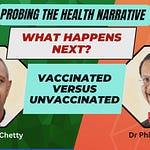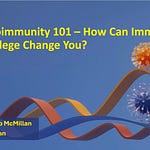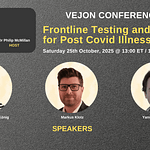Over the past few years, I have found myself returning repeatedly to the subject of embalmers' clots. This is not because it is sensational, but because it raises serious and clinically significant questions. Embalmers across the world have been reporting the appearance of strange, long, white, fibrous clots during post-mortem procedures. These are clots they had not seen before the year 2021.
Many people dismiss these findings as fringe science or conspiracy theories. I do not. I see a pattern that demands proper investigation. If clots like these are forming in the deceased, the logical next question is whether they are forming in living individuals as well. If they are, we must ask what could be causing them, and why we have not seen this before.
The Role of Macrophages in Clot Formation
This line of inquiry led me to investigate the role of the immune system, particularly the activity of macrophages. Macrophages are immune cells that serve critical functions, including engulfing pathogens and presenting antigens to other immune cells. A recent study on epigenetic memory in monocyte-derived macrophages after mRNA vaccination significantly changed my perspective. The study demonstrated that these immune cells remain in a hyperactivated state long after their initial exposure to the spike protein. While this sustained activation might be beneficial in fighting off viral infections, it raises concerns about what could happen in the case of reinfection. Primed immune cells may overreact, creating a state of chronic inflammation.
Do mRNA Vaccines Hijack Your Immune System?
I’ve heard the phrase repeated so many times: “mRNA can’t change your DNA.” And yes, in a strict sense, that’s technically true. RNA doesn't just reverse-engineer itself into your genetic code like some viruses can. But if you stop there, you miss something much more subtle and potentially far more important.
Introducing Macrophage Extracellular Traps (METs)
Adding to this picture is the concept of Macrophage Extracellular Traps, or METs. Similar to neutrophil extracellular traps (NETs), METs are web-like structures expelled by macrophages under conditions of extreme stress or immune activation. These webs are composed of DNA, histones, and enzymes that are intended to trap and neutralize pathogens. However, they also provide a scaffold that can trap circulating proteins, such as fibrinogen, hemoglobin, and immunoglobulins. This interaction may form dense and sticky clots that are resistant to normal breakdown by the body’s clot-dissolving mechanisms. In this light, the fibrous clots described by embalmers could represent the final, visible stage of an internal process that might be occurring silently in others.
The Real Danger May Be Invisible
While large white clots may only be observed post-mortem, we must consider the possibility that smaller, less noticeable clots are forming in living people. These microclots could obstruct blood flow in organs such as the brain, lungs, or heart, and remain undetected until they cause serious or even life-threatening complications. The idea that an immune system primed by vaccination or previous infection could respond to a trigger by releasing METs is a compelling and testable hypothesis. It raises essential questions about the long-term impact of immune priming and the need to investigate unusual clotting patterns more seriously.
A Call for Deeper Scientific Inquiry
This is not a claim made lightly, nor should it be ignored because it challenges existing assumptions. The fact that embalmers, medical professionals, and even pathologists are reporting these observations means the phenomenon is real. The next step is to understand the mechanism behind it. The idea that METs contribute to unusual and difficult-to-break-down clots is not only biologically plausible but also fits the emerging data from proteomic analyses and immune profiling.
Science must continue to ask difficult questions and be willing to follow the evidence, even when it leads us into uncomfortable territory. We owe it to public health and to future generations to investigate this fully and honestly.
Please support my research efforts by subscribing to Vejon Health Substack. Your support allows me to continue bringing you my insights in a timely and effective way.












